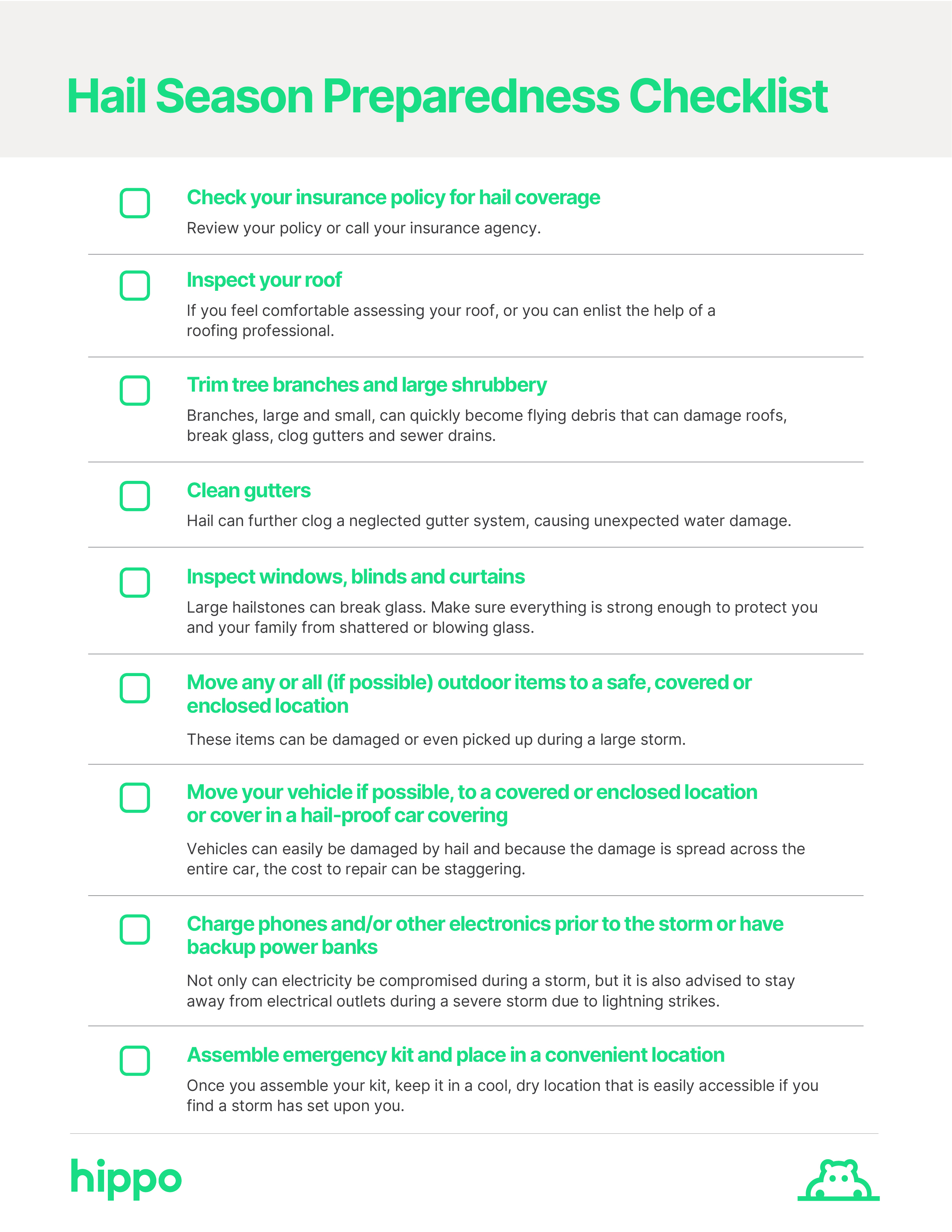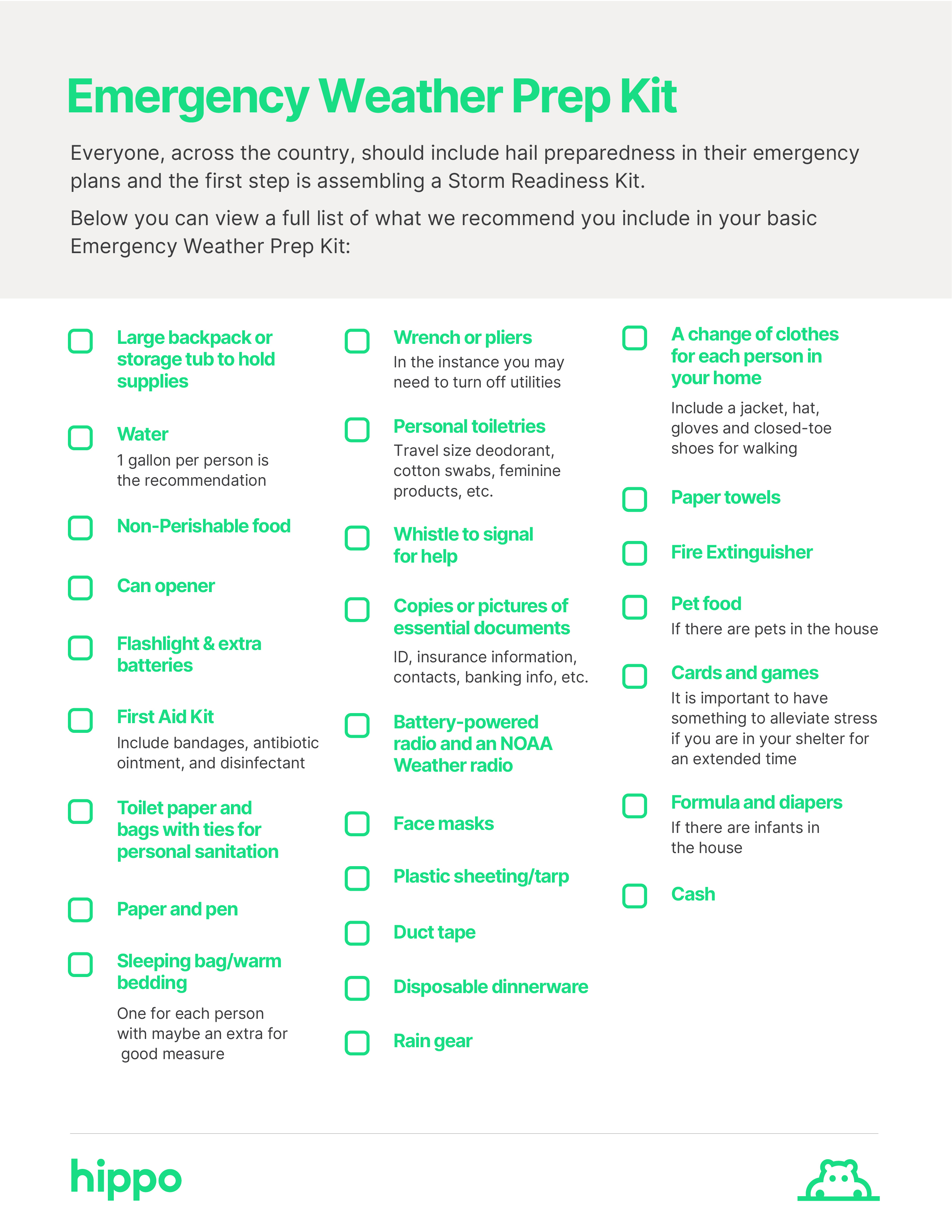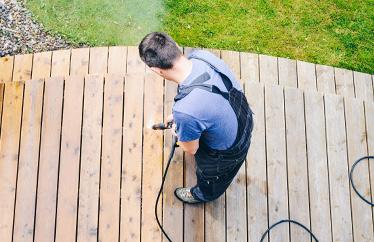How to Prepare for a Hail Storm: Tips for Homeowners

Everyone looks forward to warmer weather after a long winter. As you begin to get ready for sunnier days, we are here to help you get prepared for the consequences of the incoming hotter temperatures – hail and severe storms. While both can happen year-round, we know there is definitely a hail season.
In 2019, Texas experienced 872 hail storms (that's a 71% increase over 2018!), as documented by the NOAA's National Weather Service. Hail season lasts from March until May with May being the most active month, accounting for about 22% of the entire year and in 2020, SouthTexas also saw golf-ball-sized hail that caused $1.4 BILLION in damage, according to the NOAA.
Preparation is key
While people who live in "Hail Alley" know the damage that hail and those severe storms can do, hail can occur anywhere in the country. Before you hear the thunder and before you see the lightning, we put together some expert tips and tricks to get you prepped for hail season.

Make a kit
Everyone, across the country, should include hail preparedness in their emergency plans and the first step is assembling a Storm Readiness Kit.
Below you can view and/or download a full list of what we recommend you include in your basic Storm Readiness Kit:

Practice makes perfect
One thing that may help you keep your home and family safe during emergencies is to rehearse the emergency situation. Practice not only helps people understand the plan, but it will also give you the opportunity to troubleshoot unanticipated issues in a safe environment.
Once you have decided on a plan, do a dry run and adjust your strategy based on what you’ve learned. Make sure to rehearse different scenarios like "are the kids at school?", "middle of the night" and "can't find the cat!" Then sit back together to evaluate your planning process. Readjust your plan to fit the household's needs and scenarios until everyone feels confident in the plan.
Think outside the box
The box being your house that is. One crucial way to help prevent hail damage to your home and it’s surrounding area is to make sure your property is well-maintained. For instance, pruning your trees regularly is a great first step. The weak branches can be a hazard during hail season in all kinds of ways. Also securely tethering new trees is vital so the wind doesn't uproot them.
Double-check that all of your drains are clear throughout the entire home and property. Cleaning your gutters and drainage systems is particularly important throughout the fall and winter seasons to prevent several hazards in and around the home.
Because storms can sneak up, make it a best practice to safely secure all patio/outdoor furniture, trampolines, and any planters, etc., away from the weather. These can do damage or be damaged, and neither is preferred.
It's important to note that if you are part of an HOA, check-in with them. They are a great resource as they should have a preparedness plan and are experts in the property.
Policy is key
Check your insurance policies and covered hazards in advance of any severe weather, so you know what is and isn't covered. It's possible you may not have enough protection to cover all of your losses – especially if there is extensive damage done. Consider extra coverage, which will extend your range of coverage up to a certain percentage beyond your home's insured value. This type of coverage helps those living in high-risk areas since large-scale destruction can hike up building costs.
As with any situation, it's necessary to know what you have – and make sure you have what you need – before a natural disaster strikes.
You know what they say, “Failure to plan is a plan to fail.”
We here at Hippo knew we needed to act fast to ensure you have all the information you need because hailstorms hit with little warning, usually only lasting an average of five minutes, hailstones are about the size of a pea or marble, are on average the size of golf balls and because they can get as large as a softball the more you can do to prepare yourself ahead of time for these weather events, the better off you'll be if and when hail strikes your area.





